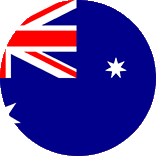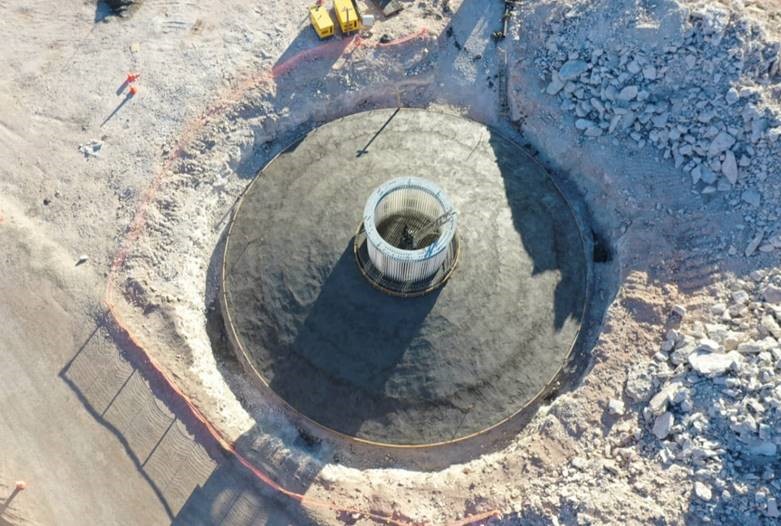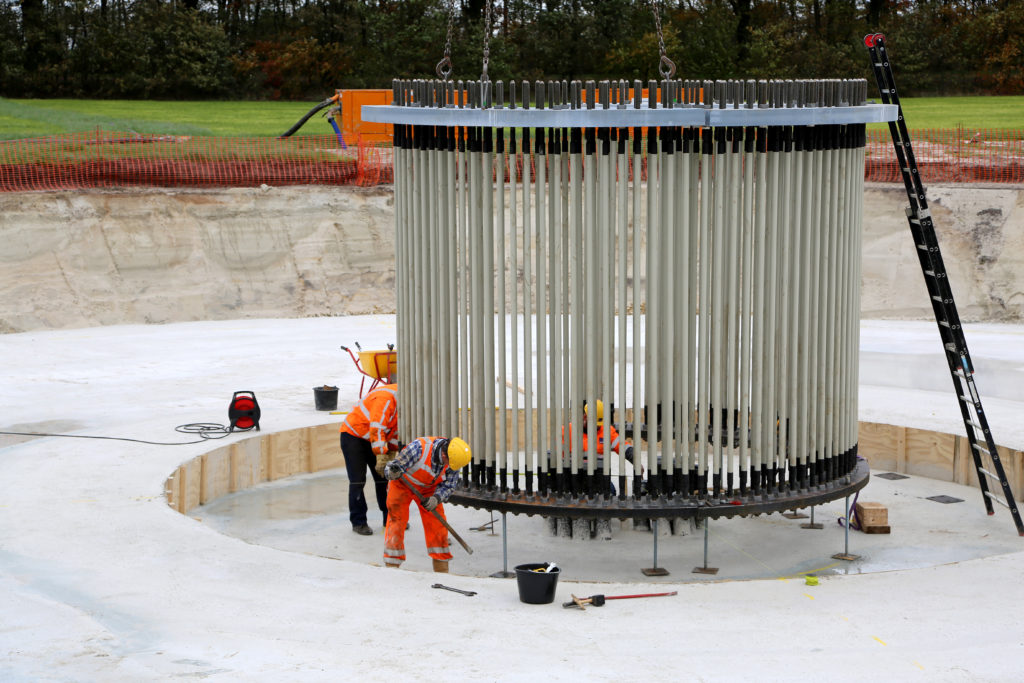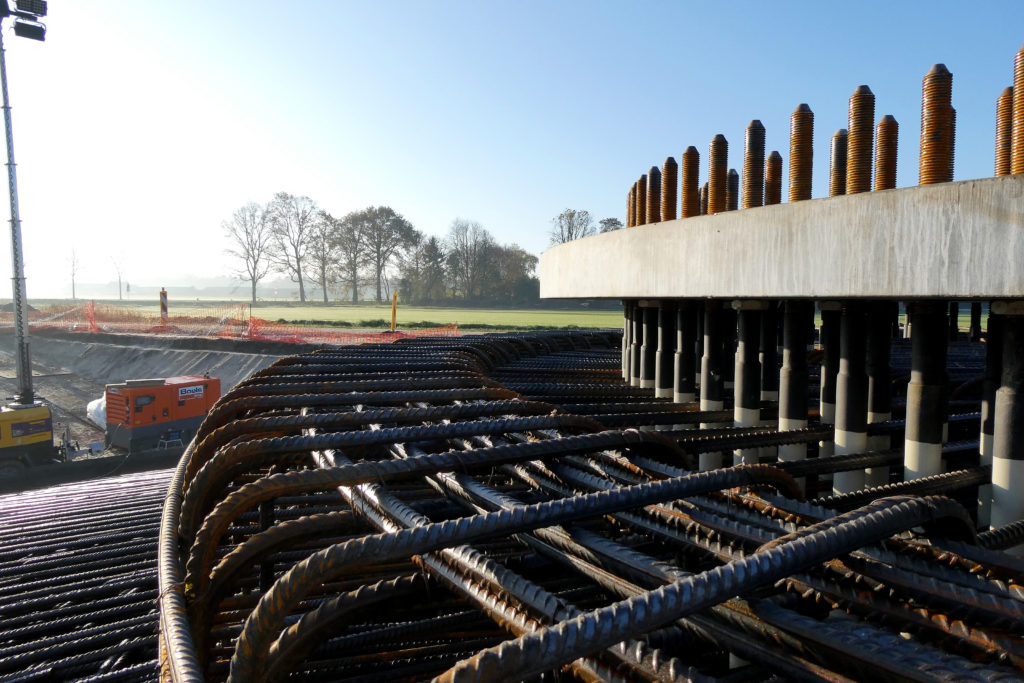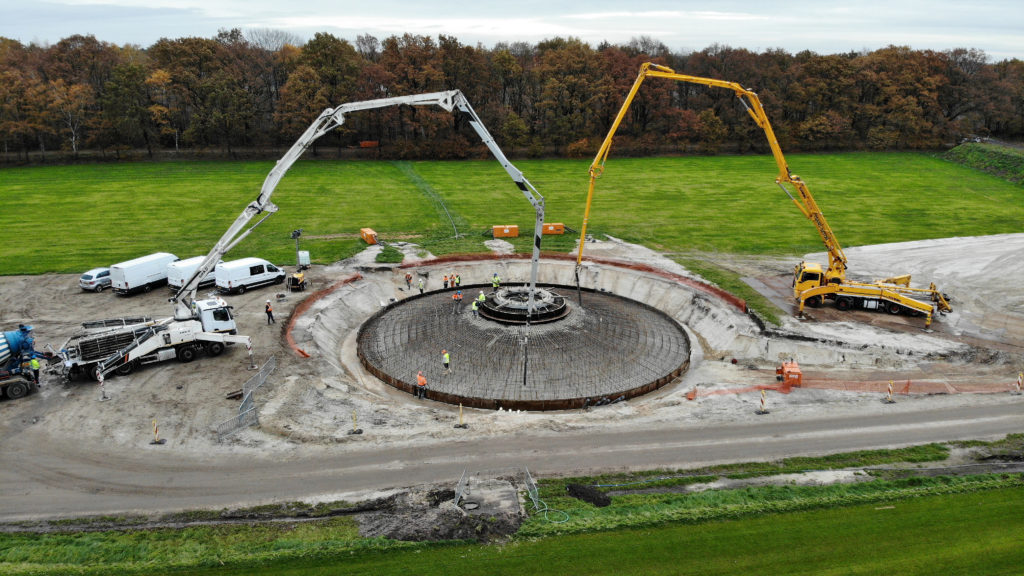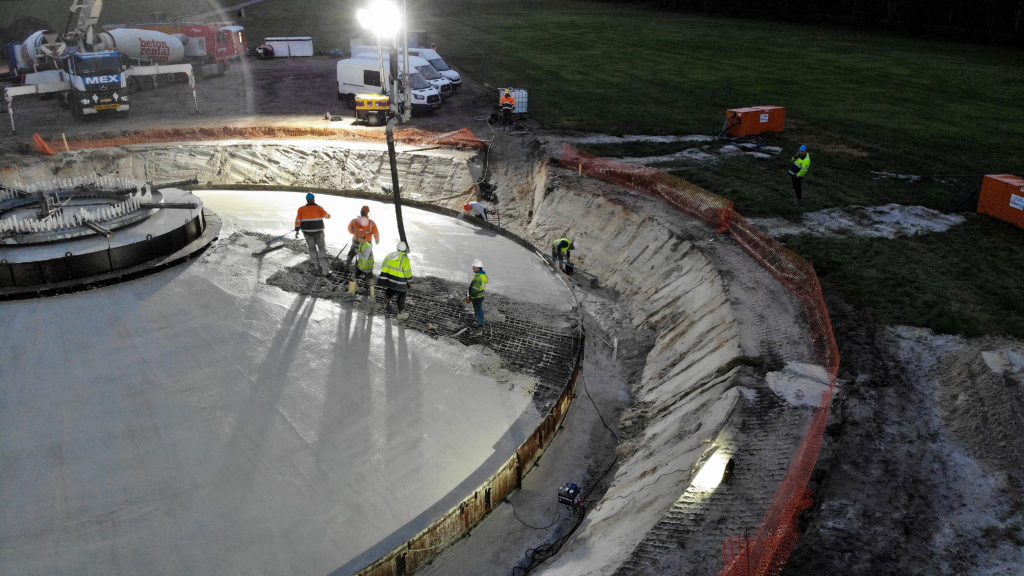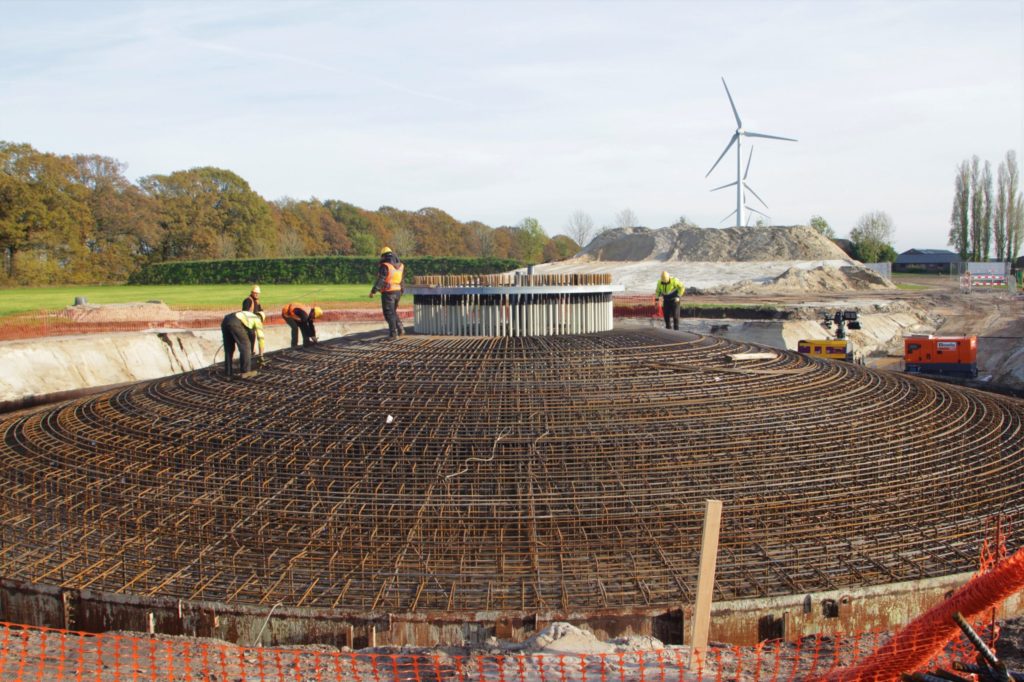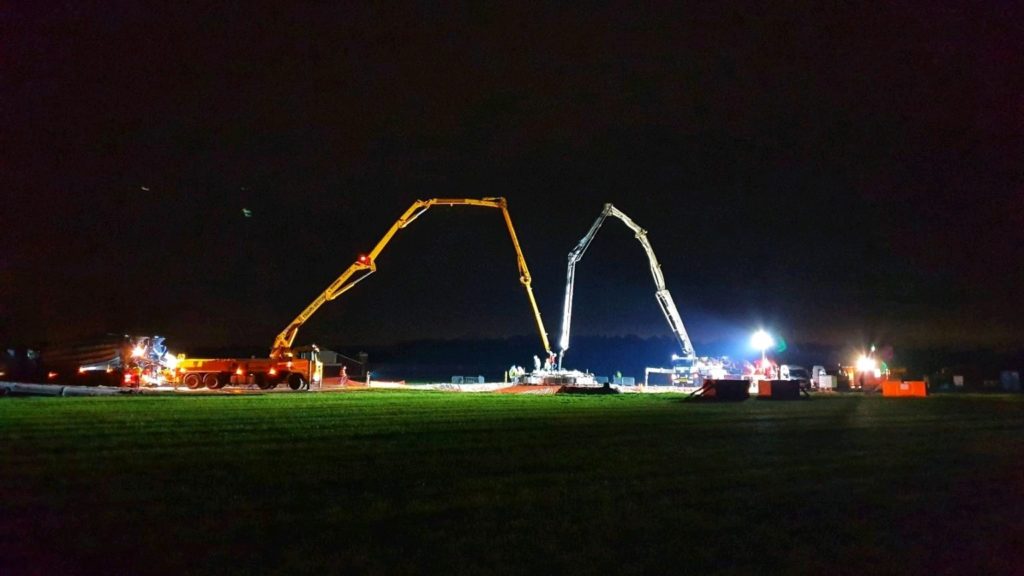CTP joined PWEA & DPWEC
News from CTP – CTE Wind Poland
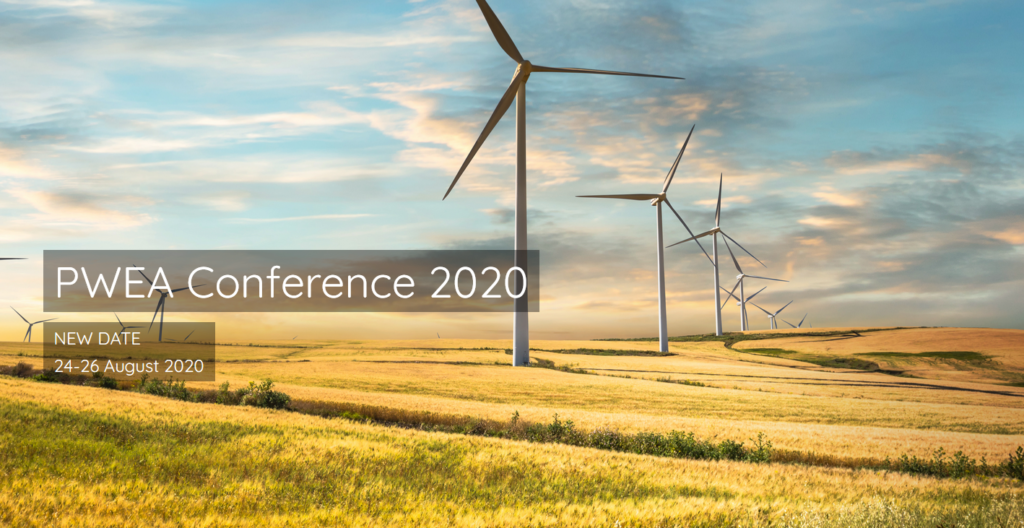
CTP – CTE Wind Poland joined the polish wind energy association and the Polish-German wind energy club. The key goals of the club’s activities are the support of the wind energy in Poland and Germany with CTE Wind’s WTG-design and geotech consulting.
CTP joined the Polish Wind Energy Association (PWEA). This gives CTE Wind access to a wider customer base and allows the specialist of wind turbine foundation design to influence the development of the wind energy industry in Poland. Moreover, it facilitates our participation in the work and events of the association.
Annual wind conference in Poland
One of them is the annual PWEA conference in Serock (Poland), on August 24-26. CTP – CTE Wind Poland CEO Dariusz Krasowski will participate at the this years conference. One of the topics will give status update about the onshore wind market in Poland and in Europe.
CTP, joined Polish-German wind energy club
At the same time, CTP joined the group of the Polish-German wind energy club – DPWEC. The club is an exciting place to exchange experiences and build up relationships and contacts in the wind industry. The key goals of the club’s activities are the support of the wind energy in Poland and Germany with new upcoming solutions.
CTP, as part of CTE Wind International
CTP, as part of CTE Wind International, did in the past some excellent work with foundation design for the biggest wind park close to the Baltic sea with 81 wind turbines . You can read more about our nearshore solution here: Biggest Wind Park In Poland
Colloque National Eolien 2021
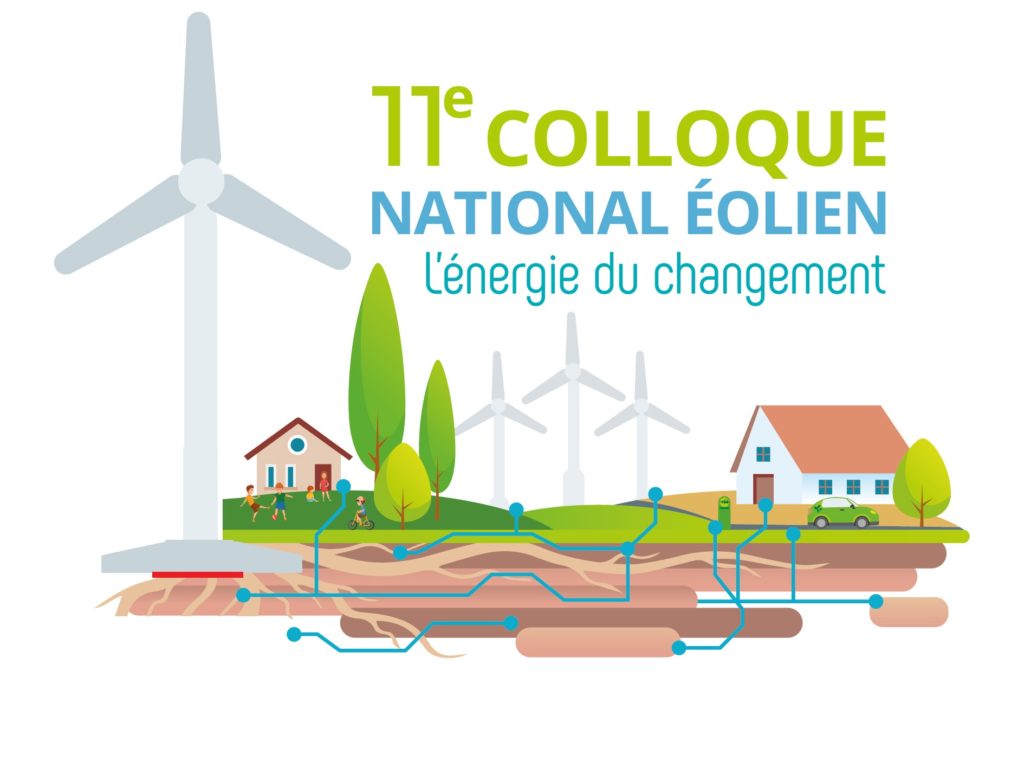
CTE Wind attends for the first time at the French national symposium with own booth.
For this 11th edition, France Energie Eolienne has chosen to place the Colloque National Éolien (CNE) under the sign of change. While France and Europe are working to build for the post-crisis period, wind energy is more than ever an essential solution for the “Next World”. Indeed, wind power will enable a virtuous and job-creating economic recovery in the heart of France and elsewhere, making a significant contribution to ecological and sustainable electricity and to the reduction of carbon emissions in Europe. The ecological transition, the development of renewable energies and in particular wind power, are the two pillars on which tomorrow’s jobs and growth will be built. The CNE will take place on the 14th and 15th October at the Parc Floral de Paris.
ARRANGE A MEETING NOW
CTE Wind France CEO Alexander MARTIN, CTO Binh Tran and CTE Wind International Business Developer Sergio CARÈ-LUCAS will attend the most important French symposium to discuss about key trends of wind energy market in France and world wide.
This is a great opportunity for interested companies and experts to meet our dedicated management and sales team to learn more about CTE Wind’s civil engineering and foundation expertise and to talk about future business opportunities.
Please do not hesitate to write us to arrange a meeting.
We are looking forward to meeting you in Paris.
LINK TO CONTACT
From 1 to 12 MW wind turbines
Research & Development
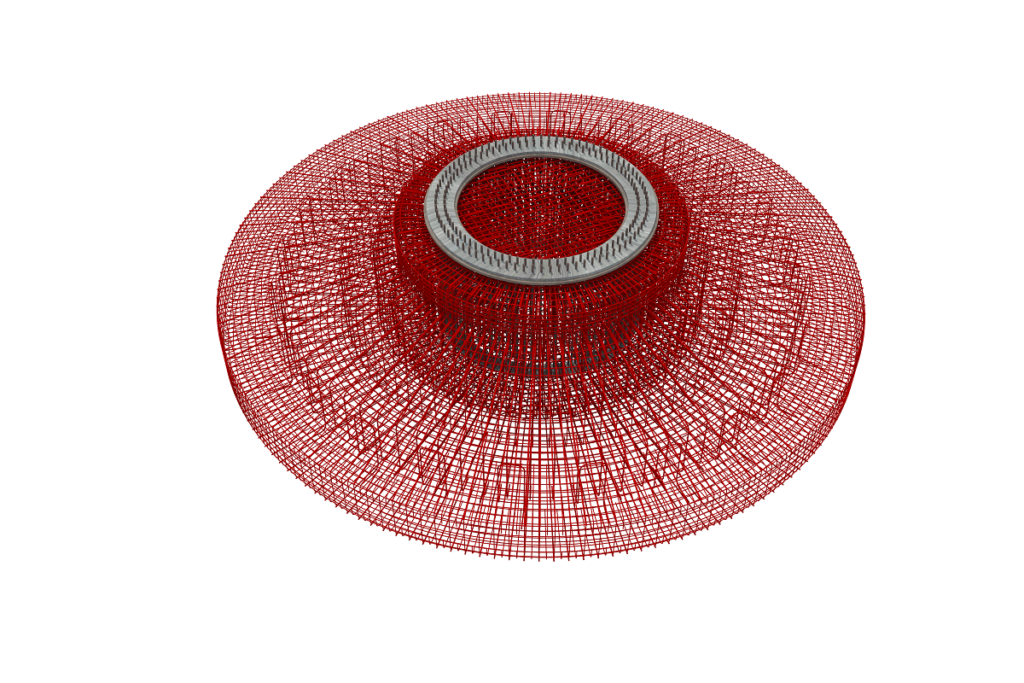
CTE Wind R&D and Consulting services are the first choice when it comes to foundation design regardless of the WTG-manufacturer, model, size, power or soil conditions. Thanks to internal R&D-Team with senior engineers, holding over 100 years of cumulated experience in the design of wind turbine foundations, nothing is impossible.
La Richardais (FRA) – In 2019 Developers worldwide have globally commissioned a little over 45GW of onshore wind turbines. According to Bloomberg New Energy Finance, the Danish firm Vestas remained this way the world’s leading wind turbine supplier, with Spanish-German wind engineering company Siemens Gamesa a strong second. Chinas manufacturer number one Goldwind was third in the rankings, while US-Leader GE Renewable Energy’s secured its fourth place. Together the top four manufacturers accounted for 55 percent of the market share.
100 years of cumulated experience
This statement applies more or less also to CTE Wind, which calculated, designed and evaluated about 5000 WTG-foundations in 2019 around the globe. Thanks to CTE Wind’s internal R&D, with senior engineers holding over 100 years of cumulated experience in the design of wind turbine foundations worldwide, new turbine models from the top manufacturers as well as less common WTG-models from smaller or local manufacturers are only a little challenge. CTE Wind engineering services lead to state-of-the-art foundation solutions for wind turbines. Regardless of whether it is a prototype, such as GE’s giant 12 MW Haliade X or smaller 1 MW machine, from German ENO or Dutch EWT.
Wooden tower
Also worth mentioning: the different types of towers for wind turbines. Concrete (hollow foundation) and steel towers are well known to CTE Wind. Both tower systems are suitable to be used alone or in combination. Even foundations with wooden towers were calculated and designed by CTE Wind in the past. The sum of all experiences made during the projects since 2003 is the reason why their engineering services in foundation design are the first choice for wind turbine manufacturers, wind park developers and EPC contractors worldwide.
If you want to learn more about CTE Wind International you can read more articles about projects and news in OUR-PROJECTS & OUR-NEWS – sections. For more Information about OUR-SERVICES please CONTACT US.
Multiple Projects in Andean Region
Latin American News
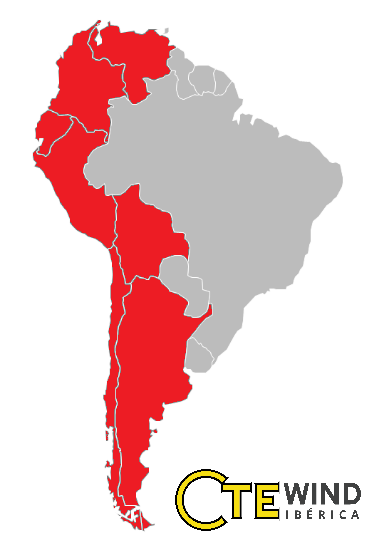
CTE Wind swoops on WTG foundation design projects in Andean region .
Bilbao (ESP) /La Richardais (FRA) – CTE Wind Ibérica, the Spanish Branch of CTE Wind International, has secured several contracts to deliver foundation design and geotechnical services for multiple wind farms in Colombia, Ecuador and Peru. In Ecuador, the expert in foundation design for wind turbine generators (WTG), has already finished its project for a wind farm with nearly 25 turbines. In Colombia CTE Wind is working on foundation design for a couple of wind parks and in Peru a new final design project will start in the very next days.
Enrique MARTINEZ, Commercial Manager of CTE Wind Ibérica said: «We are thrilled to work in those projects in the Andean region, which due to tectonic movements is a complex and challenging environment. This shows the trust that our customers have in our capabilities.»
Earthquakes and volcanic eruptions
Since earlier this year the structural engineering company has also been working on various projects in Chile, with globally 100 WTGs counting. Thanks to this achievement CTE Wind Ibérica worked in almost all Andean states. And this, in a region where tectonic forces can result in minor to major earthquakes and volcanic eruptions! But thanks to CTE Wind’s internal Geotech engineers these normal geological activities are no problem, as they were considered during the final design calculations.
CTE Wind Civil Engineering is an international engineering consulting firm specialized in the analysis and design of on- and nearshore wind turbine foundations. CTE Wind is active in the wind energy sector since 2003 with offices in France (HQ), Brazil, Poland, Portugal, Spain and in Asia. CTE Wind has calculated and designed foundations over 16’500 turbines in 70 countries.
If you want to learn more about CTE Wind International you can read more articles about projects and news in OUR-PROJECTS & OUR-NEWS – sections. For more Information about OUR-SERVICES please CONTACT US.
Increasing Hub-Heights and Project Requirements
WTG Foundation Design in France
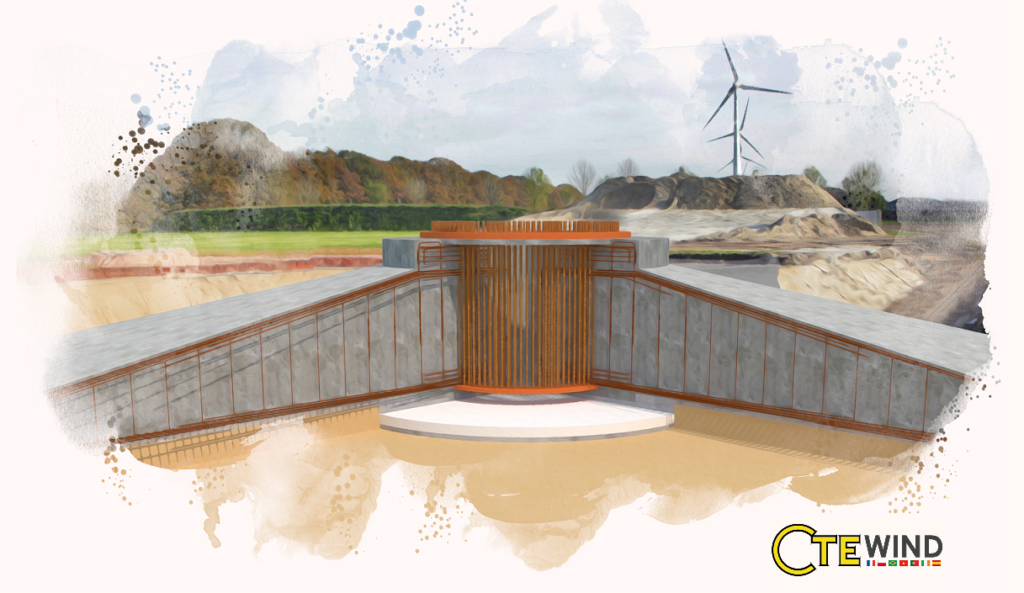
With the Soft-Spot® CTE Wind Civil Engineering captures the spirit of the times. The success is not only due to the new design solution. It is more a result of the developers increasing projects requirements and the size of the turbines. CTE Wind masters both easily.
La Richardais (FRA) – CTE Wind International, expert in foundation design for wind turbine generators, has his finger on the pulse of time with the Soft-spot® solution. Trademarked and patented in France (patent pending worldwide), 750 wind turbines use the resource saving solution worldwide. Over the half of the 50 realized projects related to the Soft-Spot® are located in France.
Cost savings
The success of the civil engineering company CTE Wind is not only due to the Soft-Spot®. It mainly relies on the fact that CTE Wind can master the increasing requirements of the wind energy developers. Wind farms have to be designed in a way that saves resources and allows fast set-up times; two important factors which determine the construction costs of WTG foundations.
A further driver and important point why developers choose CTE Wind is the increasing size of the turbines. Four to five years ago, the hub height of wind turbines ranged between 80 and 90 meters. Today the average hub heights of CTE Winds projects are between 110 and 120 meters. Some of the final designs even had a hub height far above average. The highest hub height ever calculated by CTE Wind stands in Salzgitter Germany with 166 meters.
Adapting the design to soil conditions
CTE Wind adapts its foundations designs to the local soil conditions and in accordance with applicable national and international standards. To avoid extremely large foundations CTE Wind’s engineering team has found with the Soft-Spot® a good and reliable solution to meet the mentioned resource-saving requirements. The construction is very easy and it allows savings in concrete volume up to 15% and a total weight reduction of reinforcement bars of 7 to 9%. Thanks to the reduction of the foundation diameter the earthwork to be handled is also reduced. This leads to less surface use for the foundation.
If you want to learn more about CTE Wind International you can read more articles about projects and news in OUR-PROJECTS & OUR-NEWS – sections. For more Information about OUR-SERVICES please CONTACT US.

Non-conventional but reliable and feasible
Rock anchor and high plinth foundations
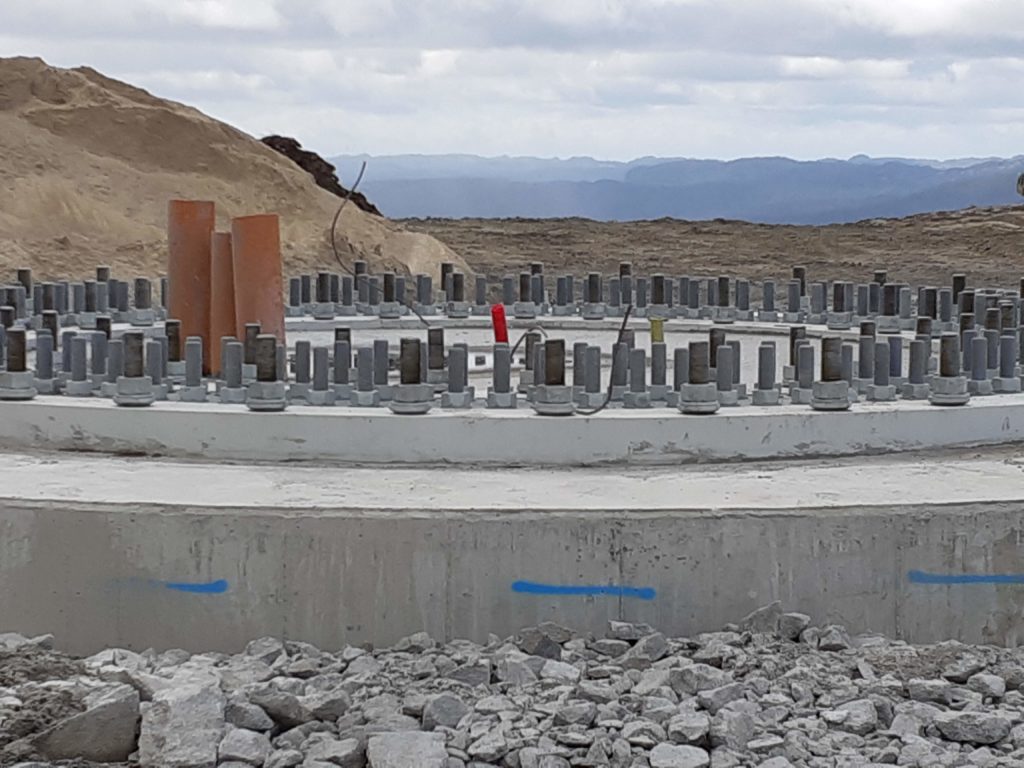
.
.
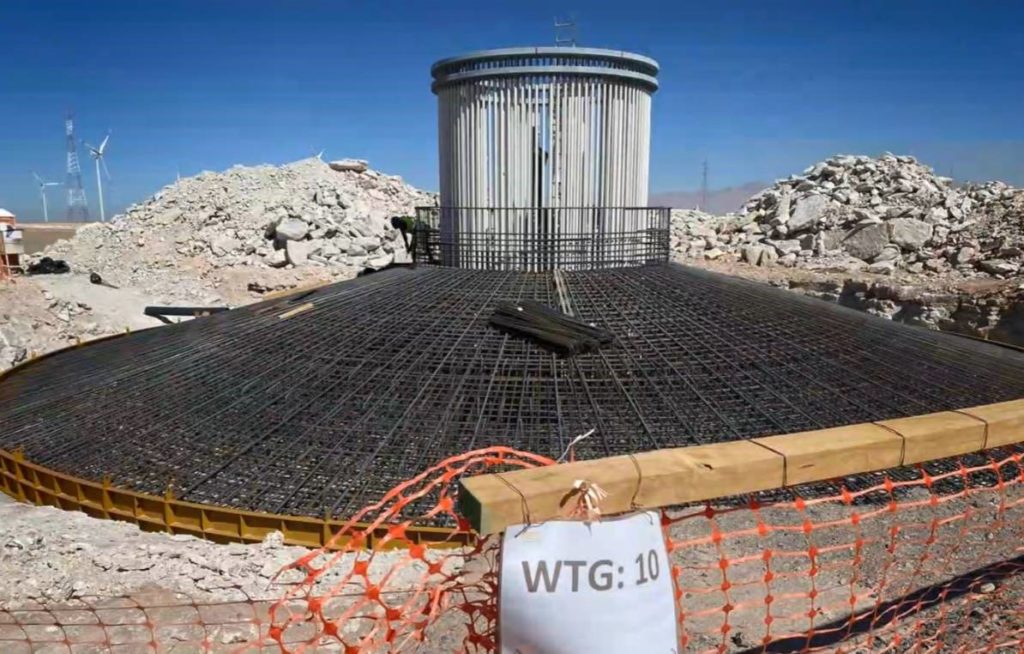
Two simply but effective foundation solutions are the rock anchor, designed for a wind park in Mexico and the high plinth solution for a wind farm in Chile. They are highly cost efficient, feasible and have proven to be very reliable in many projects.
Bilbao (ESP) – Special requests often demand tailormade solutions. But tailormade needs an high specialization and a lot of knowhow from the engineers in the specific field. In foundation design for wind turbine generator (WTG), this specific knowledge is not that common, except for CTE Wind International. Their senior engineers are often asked to find new design solutions. For this purpose, they resort to tried and tested instead of reinventing the wheel. Two simply but effective solutions are the rock anchor and the high plinth solution. They aren’t NEW solutions but are highly cost efficient, feasible and their reliability has been proved in many projects. This article features two project cases, among many others, where CTE Wind International designed a rock anchor for a wind park in Mexico and a high plinth foundation for a wind farm in Chile.
Cost savings thanks to rock anchor
In Mexico CTE Wind Ibérica was selected as WTG foundation designer by a Spanish EPC company. The project has more than 20 WTGs with concrete towers. The project analysis conducted by the Spanish expert in foundation design has led to the recommendation to deploy two different solutions in order to optimize the costs of project. In fact, the soil conditions showed that over a third of the wind turbines were planned on rocky ground. Rather than equipping all wind turbine with standard slab foundations, CTE Wind’s engineering team decided together with the customer to implement rock anchors. This solution uses the rock masses as a WTG foundation. In that way the construction company is able take advantage of the earth crust instead of building a slab foundation. The costs for the reinforced concrete and the construction work can be saved. But this solution is specially challenging as the engineers have to adapt the foundation, with an interface, between the concrete towers and the rock anchors. Not to forget the special design work of these anchors that needs to be done. Finally, the client was impressed and satisfied about the result. But more important: the project costs were below the initial budget.
High plinth for extra height
In another case, CTE Wind was approached by a global construction company and explained the challenge for its project in Chile, with over 35 WTGs. The customer needed an hub height of 4 meters more to increase the energy production and ensure the yield and so its income. They weren’t totally satisfied with a complex solution by one of CTE Wind’s competitors. That is why the construction company asked CTE Wind to find a simple, reliable, feasible and cost-effective solution. That is how the high plinth foundation was chosen: a solution already tested and implemented in multiple projects in Europe. The idea of this foundation is to reach higher hub height with a high pedestal. The tower stands 3 to 6 meters above the «ground level», keeping the gravity foundation independent from the tower system. Ideally the solution provides a longer anchor cage. CTE Wind’s engineering team designed the anchor cage for this project and determined the bolt length and steel quality. If needed CTE Wind can also prepare the detailed anchor cage drawing. After comparing the results of CTE Wind’s predesigns to the competitor’s solutions, the customer decided to go ahead with CTE Wind’s high plinth foundation. No difficulties in regards the construction have been reported. On the contrary, the Spanish expert of WTG foundation design was congratulated.
If you want to learn more about CTE Wind International you can read more articles about projects and news in OUR-PROJECTS & OUR-NEWS – sections. For more Information about OUR-SERVICES please CONTACT US.
Tidal resistant foundation design
Nearshore wind turbines

CTE Wind Asia has been awarded with its 3rd nearshore project. To this day, the Asiaese expert in foundation design has calculated 27 nearshore wind turbine foundations.
Hanoi (VNM) /La Richardais (FRA) – CTE Wind International branch office in Asia (CTV) captures the spirit of the times with its new design for nearshore foundation for wind turbine generator. With its 3rd project in the intertidal zone in Mekong delta of Asia CTV won again the customers’ trust. This is already the 3rd project since 2019. With 18 wind turbines and a total power 75MW this project has increased the total of final designs made by CTV to 27. The other two nearshore projects are located in theThanh Hai and in Vung Tau provinces.
New design allows up to 30 % savings
All CTE Wind’s nearshore foundation designs allow to save 30 percent of the construction costs compared to similar projects due to the astonishing design. For the 4.1 MW machines CTE Wind Asia has designed a foundation with 550m3 of concrete, 120 tons of steel and 44 piles. The piles have an average length of 60 meters and are hammered into the muddy nearshore underground. In fact, the geotechnics were very challenging and the piles were also designed in-house to withstand tides, waves and ship movements close to the platforms.
If you want to learn more about CTE Wind International you can read more articles about projects and news in OUR-PROJECTS & OUR-NEWS – sections. For more Information about OUR-SERVICES please CONTACT US.
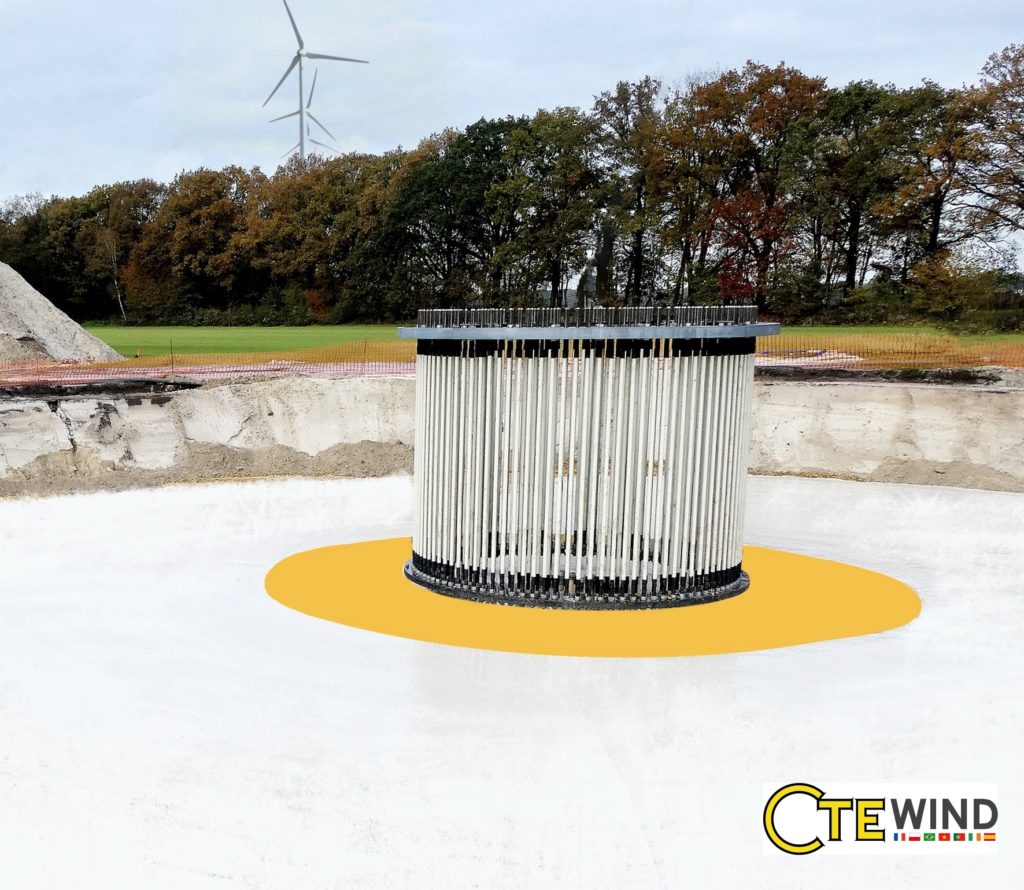
Cost saving wind turbine foundation design – CTE Wind toasts 750 Soft-spot® foundations
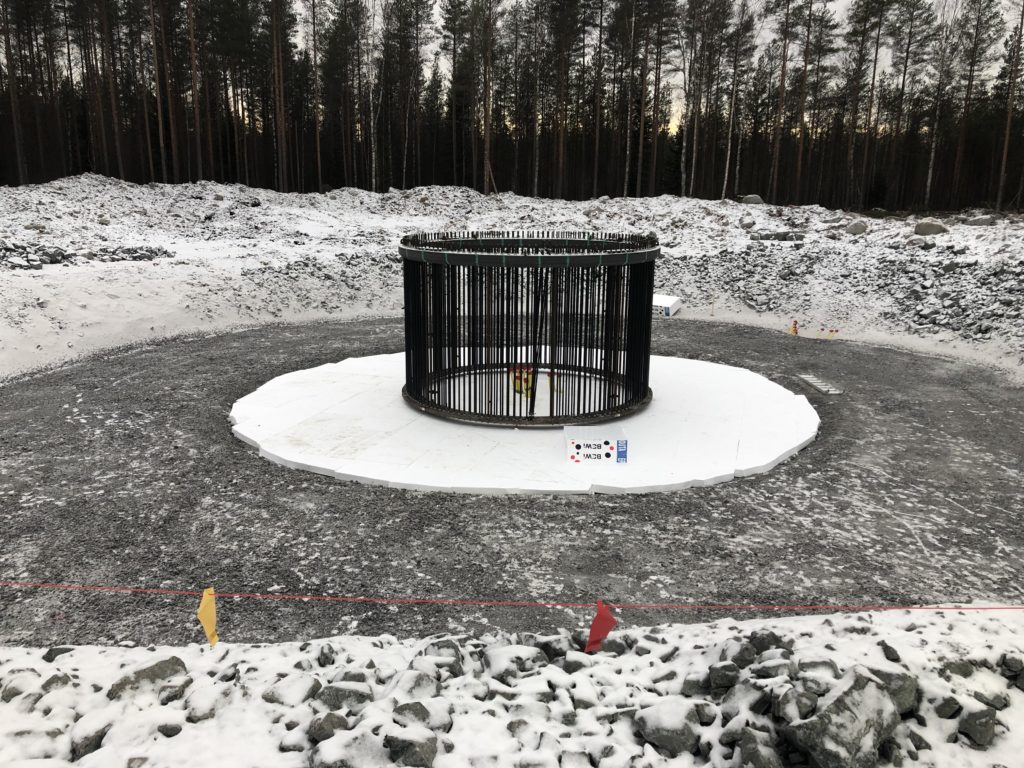
In the last 2 years over 50 project developers trusted CTE Wind’s Soft-spot® solution. Recently in Spain the expert of wind turbine foundations has won their third project, where the Soft-spot® solution was implemented.
Bilbao (Esp) / La Richardais (FRA) – CTE Wind Ibérica has won again a contract in Spain to calculate and design foundations with its Soft-spot® solution. This is an important milestone for CTE Wind International as now three wind farms on the Iberian Peninsula will take advantage of its cost saving design. In addition to these projects, CTE Wind’s clients are also adopting this solution in many other wind farms worldwide. Argentina, Brazil, Chile, France, Lithuania, Indonesia, Mexico, the Netherlands, Russia, Serbia, Sweden and Thailand to name a few. Over 50 wind farms around the globe, 750 wind turbines are using this resource saving solution which was introduced a while ago by CTE Wind.
« CTE Wind is proud of the confidence shown by its clients, and especially of the interest on applying the Soft-spot® solution», Chief executive Alexander MARTIN said and added « Our design provides interesting advantages and cost saving in material consumption and civil works while being easy to be built. »
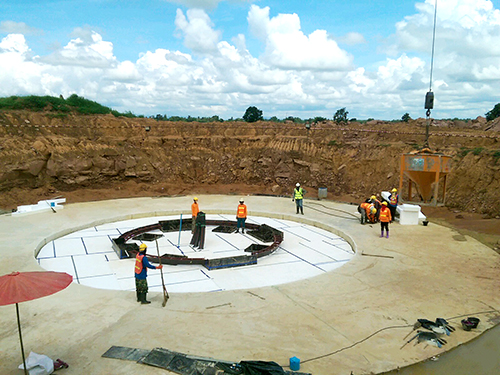
Simply the most economical foundation
The Soft-spot® was developed by CTE Wind’s engineering team and is implemented in various countries around the world. As a result of his astonishing design this solution allows savings in concrete volume up to 15%, reduction of foundation diameter and total weight reduction of reinforcement bars of 7 to 9%. The earthwork to be handled is reduced too. In some cases, what is also important is the available space : with Soft-spot® you need less surface for the foundation. The construction is very easy and the material for the soft layer can be easily purchased for a low price all over the world.
If you want to learn more about CTE Wind International you can read more articles about projects and news in OUR-PROJECTS & OUR-NEWS – sections. For more Information about OUR-SERVICES please CONTACT US.
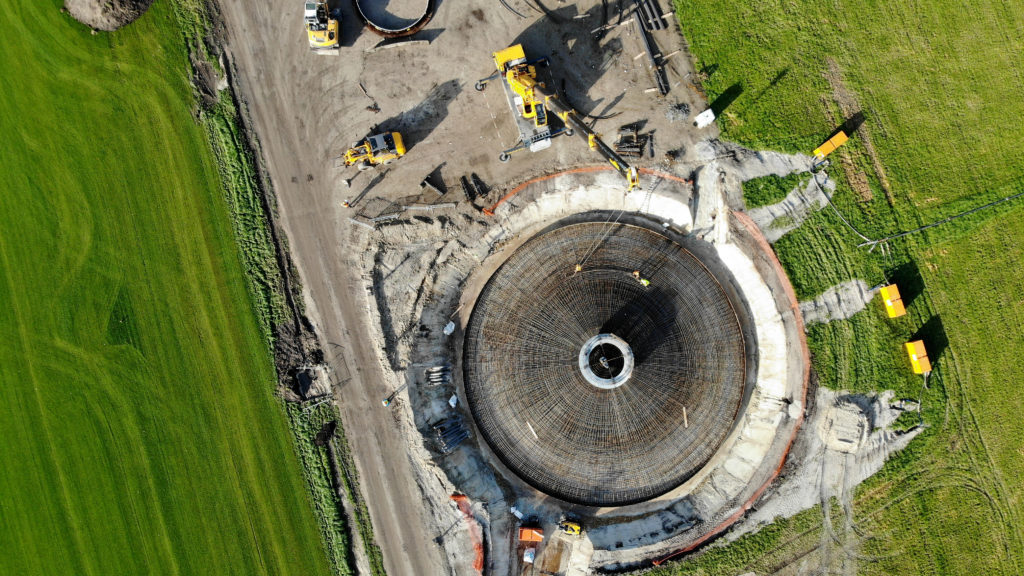
Soft-Spot® Solution – Foundation Design Helps To Save Resources
«To work with CTE Wind as designer was nice. The speed of response and reliability of the planning has been a winning experience for us.»
Arjan Louwerse from H4a Windenergie B.V.
Coöperatie Zuidenwind has poured the concrete for the foundation in Heibloem in the Netherlands and created the basis for the installation of their wind turbines. The foundation design and calculation for this project was done by CTE Wind Civil Engineering. The expert in foundation design WTG suggested their Soft-Spot® instead of a typical pile foundation.
Heibloem (NL) / La Richardais (FR) – The Netherlands soil consistsof unconsolidated, very young sediments. Due to the proximity of the low-lying part of the European continent, the basin of the North Sea, the bottom rarely rises higher than 30 m above sea level. In the areas along the coast (provinces of Groningen, Friesland, Noord-Holland, Zuid-Holland, Zeeland) the surface soil layers consist mainly of clay deposits. In the west of the Netherlands the clays are replaced by lowland moors (peat). To sum up: in the Netherlands, pile foundations are mandatory for wind turbines because of the concentrated forces occurring on little surface area. Except in Heibloem, where the ground is exceptionally stable. So good, in fact, that CTE Wind offered its resource-saving Soft-Spot® instead of the usual foundation.
Soft-Spot® in the Netherlands
The Soft-Spot® was developed by CTE Wind’s engineering team and is implemented in various countries around the world. «It was simply the most economical foundation we could choose », Arjan Louwerse from H4a Windenergie B.V. says. He is the project manager for Coöperatie Zuidenwind wind turbines. This foundation design optimizes the use of resources and helps to save up to 15 % of concrete and 2 to 5 % of reinforcement steel. In some cases what is even more important than the costs is the available space : with Soft-Spot® you need less surface for the foundation. This reduces the time and excavation costs. «The philosophy to reduce the costs of the Soft-Spot® was also a good point of discussion with our client. From the beginning we had a good feeling with the design», he explains.
In fact thanks to the new design the outer diameter of the foundation was 1.1m smaller compared to a typical foundation design. This resulted in a reduction of 11 % of concrete and 3 % of steel – or more precisely about 100m3 of reinforced concrete. «To work with CTE Wind as designer was nice. The speed of response and reliability of the planning has been a winning experience for us», Louwerse added. In spring 2020 the wind turbine will arrive together with the largest blades ever installed onshore in the Netherlands. (ctewind)
If you want to learn more about CTE Wind International you can read more articles about projects and news in OUR-PROJECTS & OUR-NEWS – sections. For more Information about OUR-SERVICES please CONTACT US.

Geotechnical Services – Good ground for wind turbines
Interview with Ana Bielza, Senior Engineer CTE Wind Iberica
Head of Geotech Services CTE Wind International
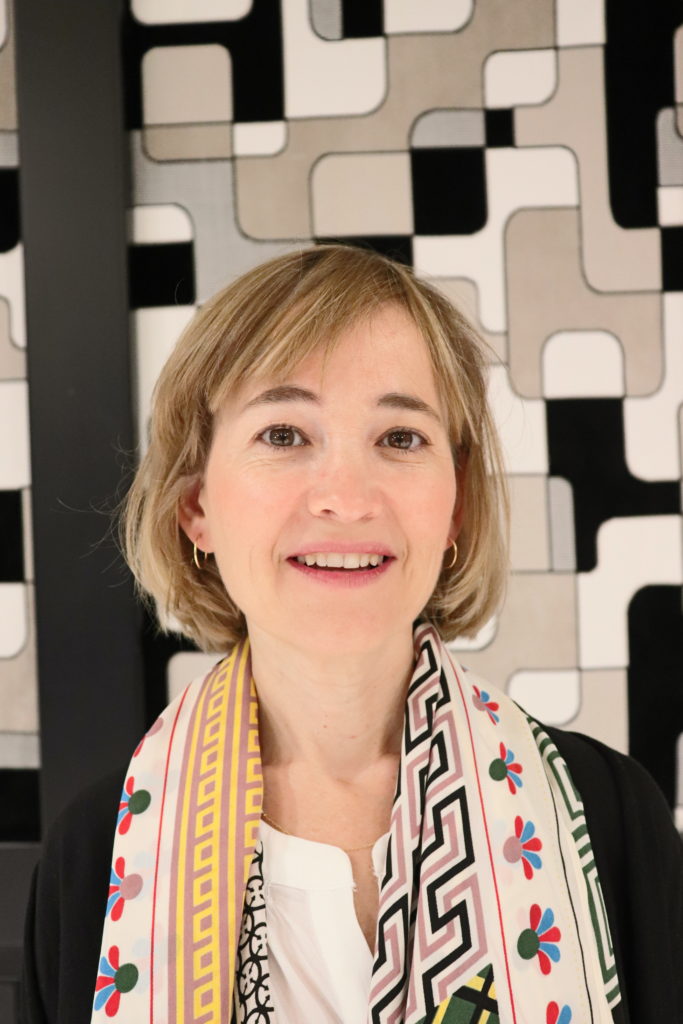
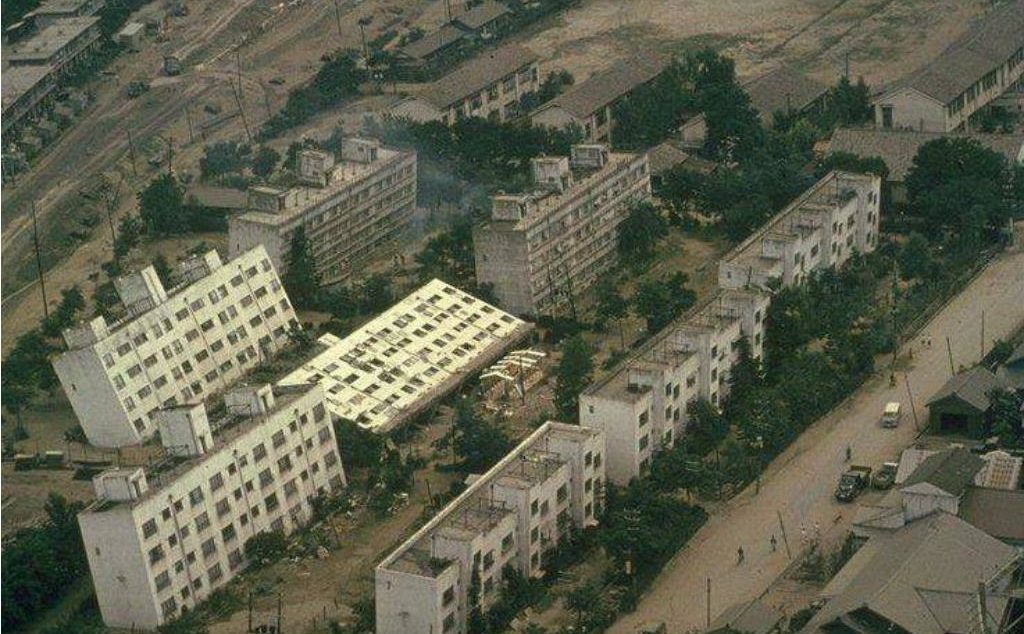
Since 2019 CTE Wind provides geotechnical engineering services to their clients. Over the last six months, Ana Bielza, Senior Engineer at CTE Wind Iberica has taken part in over 45 projects. We have asked her what she actually does and why her role is crucial for the foundation design of wind turbine generators (WTG).
Can you briefly explain to us what a specialist in geotechnical engineering like you does?
Ana Bielza: Geotechnicians apply scientific methods and engineering principles to predict the response of the ground to the foundation requirements. They then deliver this information to the civil engineers so they can design foundations accordingly.
What is the difference between common geotechnical engineering for bridges or building compared to the WTG-geotechnics?
Ana Bielza: There are not many differences. The ground has to be investigated with similar methods (drillings, geophysics, lab tests, etc.) and the same kind of parameters are needed. But the ground capacity is usually not what determines the foundation size, because most of the time the soil strength transmitted by a turbine foundation is not high. Besides, settlements in general are not important in this type of structures. But rotational stiffness can rather be the main ground parameter to manage and sometimes it can even set the foundation size.
CTE Wind offers his services worldwide
You worked on over 45 projects in six months, which is quite a lot. In which countries did you take a look at the ground?
Ana Bielza: Yes, there were many. It looks like our services are very appreciated by the customers (She smiles delighted). I worked for projects in Argentina, Australia, Belgium, Brazil, Chile, India, Indonesia, Israel, Lithuania, Mexico, Netherlands, Peru, Russia, Spain, Tanzania, Tonga, Turkey, and Ukraine. Of course, every country has its peculiarities. And I not only mean the different ground types you can find but also how the different investigations that are conducted and how the results are delivered.
Looking back on these last months, what were the challenges? Can you maybe share one or two projects with us?
Ana Bielza: Challenging projects are usually the ones located on recent soils in seismic areas and near to the shore (high water table). For example, we have done several basic designs for a huge project in India with 1000 wind turbines, located on a saline desertic zone most of the year. But during the monsoon season the landscape becomes a swamp, with water at ground level. It is a region with an extreme seismic risks, on a recent granular soil (potentially liquefiable) and very aggressive to the concrete. We had to analyze the ground with just four boreholes in an area for 1000 turbines!
Sounds like fun. As far as we know, there are no known cases of significant damage from liquefaction in wind farms. So, how did you solve this problem?
Ana Bielza: Well, with only four drillings for such a huge area, it was mandatory to be conservative, therefore, and according to the client, we worked with two possible scenarios. We hope they were representative for the situation in most of the future turbine positions. The civil engineer then follows our specifications and designs the foundations accordingly with piles.
Trust is an important key factor
Could you tell us about another project?
Ana Bielza: Another challenging project has been the one in a country in South America, a wind farm with over 40 turbines. This was a constructive design where we had also drafted the geotechnical study from a factual report given by the customer, with 45 boreholes, 80 trial pits and 46 geophysical tests as well as an important amount of laboratory tests. The ground was good, a consolidated gravely soil -a conglomerate-, but seemed to be prone to suffer some dissolution because it had salt in its matrix.
What does it mean exactly?
Ana Bielza: The matrix describes the different layers a soil can have. The salt in the matrix can be dissolved by heavy rain or ground water. But even if the ground suffers an hypothetical dissolution, the remaining gravely soil would show enough strength and rigidity to carry the WTG. Besides, there was no water at all in the area, it was in a desert area.
Good conditions. What was the problem then?
Ana Bielza: Yes, but the client was pressuring us to set down categorically that there was no risk of dissolution, and there was no possibility at all for buoyancy. The geotechnics of the project showed good conditions for our SOFT-SPOT® foundation, but the wind farm owner seemed to have unfounded fears and wanted us to affirm that there was zero risk in this area. But zero risk does not exist. It was tricky to explain why there are no risk but we had to write about an hypothetical dissolution. Luckily, we finally came to an understanding. (ctewind)
If you want to learn more about CTE Wind International you can read more articles about projects and news in OUR-PROJECTS & OUR-NEWS – sections.
For more Information about OUR-SERVICES please CONTACT US.








